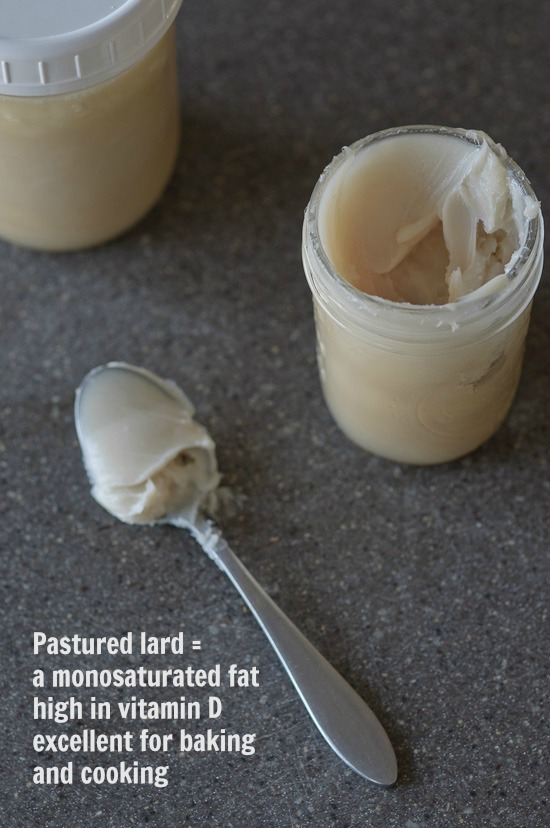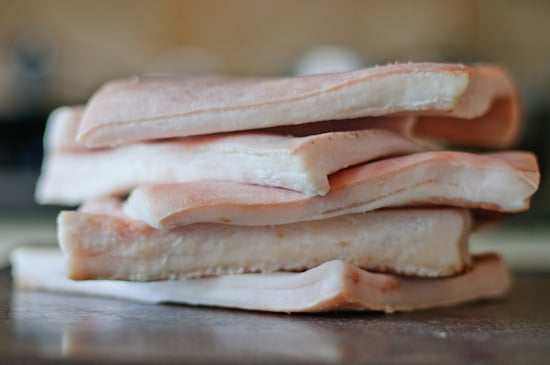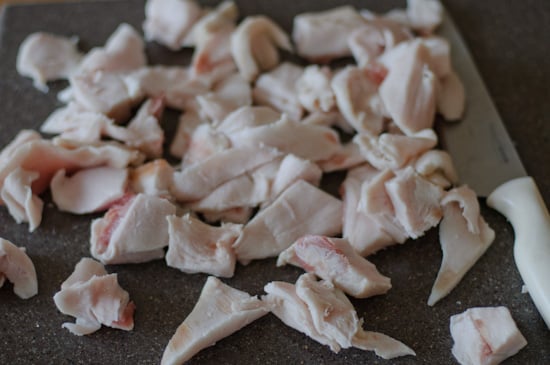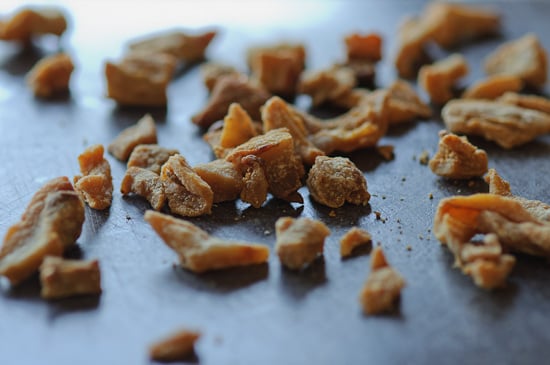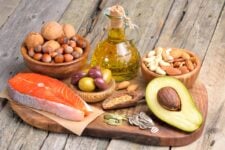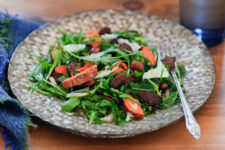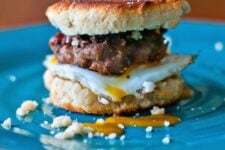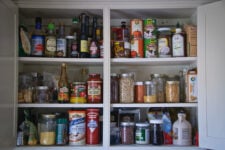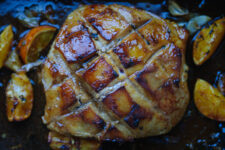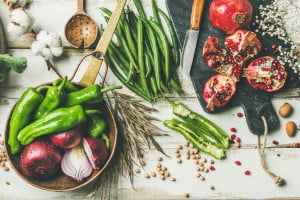I know what many of you are thinking right now. Lard? On Healthy Green Kitchen? Has Winnie gone bonkers?
Nope. I am as sane as ever, I promise. This post may seem surprising to you, but it’s really no different than any of my others. After all, when I post recipes, I always celebrate real food and healthy fats. And lard is both.
What’s that, you say? Lard is a healthy fat? Yes, it’s true. I too used to think lard was gross, and that eating it would give me a lard ass tushy. I also assumed putting it into my body would put me on the fast track to a heart attack, but I don’t think these things any more.
I am not talking about the partially hydrogenated lard you’ll find at the grocery store, though. That stuff IS NOT healthy. What I am talking about is lard rendered from the fat of from pastured pigs: pigs that have access to fresh air and sunshine, pigs that eat grass and other things pigs are supposed to eat (not pigs who spend their lives in cages eating grains). Lard from pastured pigs is high in vitamin D, and like olive oil, lard is classified as a monounsaturated fat (lard is about 40% saturated…that’s less than butter).
{I’ve mentioned it before, but it bears repeating that there’s really nothing wrong with saturated fat from natural sources. In fact, saturated fats are very important! There’s long been a misguided notion that all saturated fat does is contribute to heart disease, but this simply isn’t the case. Saturated fats are vital to the structure of all cells in the body, they boost the immune system, and they are necessary for the absorption of minerals such as calcium. Adequate saturated fats are also necessary for optimal storage and assimilation of the unsaturated omega-3s. Meaning: omega-3 fats are even more effective when they are combined in the diet with some saturated fats.}
Lard has a high smoke point so it’s one of the best fats for high temperature cooking (such as frying). Unlike many oils (and vegetable oils, in particular), lard is considered a “stable” fat: it does not form free radicals when heated. Lard also imparts that coveted flakiness to pie crusts and turns pastries that you make with it into seriously divine treats.
Rendering your own lard from pastured pork fat is easy. You’ll need what is called “fatback” or “leaf lard” (the fat from around the kidneys) to get started. If your intention is to use your lard in pastries, then definitely go with the leaf lard because it’s creamy white and has a very neutral flavor.
I couldn’t find leaf lard so I used fatback I bought from my favorite local farmers.
It was very inexpensive ($6) for the 5 pounds of fat you see above. If using fatback, then you’ll need to use a very sharp knife to slice the skin away from the fat. If you purchase fatback from a butcher, they can probably do this for you.
When any and all of the skin is removed from your fat, you need to cut it into pieces. The lard will render best if the pieces are relatively small. (When all the skin was gone, I ended up with about 3 pounds of chopped fat).
Once your fat is ready, you may render it in a few different ways. You can place it in a heavy duty pot on top of the stove or you can put it in a pan in the oven that’s set at a relative low temperature (I haven’t done it this way, but I believe around 275-300 degrees F. is perfect). You may also render lard in a crockpot. Some recipes call for adding a little water to the fat (1/4-1/2 cup); I believe this is recommended to keep the fat from getting too hot and possibly burning. I kept a close eye on my fat as it was rendering, though, so I didn’t add any water.
I rendered my lard on the stove over heat that was high enough to melt the fat, but not too hot that it might burn. I stirred the fat around every now and then: it took a little over an hour for the fat to be fully rendered. If you render your lard in the oven or in a crockpot, it will take longer.
Be aware that the lard may smell strongly of pork during the rendering process. It’s best to do this on a day when you can open the windows in your kitchen. My daughter was not a fan of the smell AT ALL.
When the process is complete, you will end up with a good amount of liquid (that’s the rendered lard), as well as some solids, too. Allow everything to cool a bit and then strain through a cheesecloth lined colander. The solid pieces that you strain out are called cracklings. These are like crunchy pork croutons that can be added to salads and other dishes. They are extremely flavorful, but if you don’t like them, I bet your dog (or a friend’s dog) will happily gobble them up.
Carefully transfer your lard to glass jar(s) for storage and place in the refrigerator or freezer. (I ended up with about 3 cups of lard from 3 pounds of chopped fat.) You will notice that the liquid lard may be dark yellow/light brownish when you pour it into your jars, but don’t worry: it will lighten up a lot when it solidifies. You may also notice that the liquid lard has a distinctly pork-like scent, but don’t worry about this, either: in my experience, lard does not impart strong “porky” flavor to your food. Lard will keep for several months in the refrigerator and much longer in the freezer.
You can use lard rendered from fatback to cook eggs, meat, veggies, etc. You can also use it for pan or deep frying just about anything. I made some sweet potato fries with mine and they were really tasty: not greasy at all (and there was no trace of “porky” flavor). I plan to fry homemade doughnuts in my lard soon :)
If you have rendered leaf lard, you may use it instead of butter (or in combination with butter) in baked goods. Make sure to try it in a pie crust.
And if you cook in cast-iron (I do, and I highly recommend it), lard is also great for seasoning your pans.
Here are some more great-looking recipes I found that use lard:
Toasted Almonds with Herbs and Lemon from Nourished Kitchen
Zesty Cilantro Roasted Chicken from Food Renegade
Welsh Griddle Cakes from Serious Eats
Mom’s Lard Pie Crust from Taste of Home
Sicilian Sesame Cookies from Briciole
And here are some more posts about rendering your own lard:
Make Your Own Lard from The New Homemaker
How to Render Lard from Nourished Kitchen
How to Render Lard and Tallow from Cheeseslave
How to Render Lard from Homesick Texan
A few posts related to the “healthiness” of lard:
Lard: The New Health Food from Food and Wine
Healthy Fats and Oils Part 1 from Healthy Green Kitchen
Healthy Fats and Oils Part 2 from Healthy Green Kitchen
And Some Selected References:
Know Your Fats : The Complete Primer for Understanding the Nutrition of Fats, Oils and Cholesterol
Full Moon Feast: Food and the Hunger for Connection
Real Food: What to Eat and Why
Lastly: Disclaimers + Disclosures

